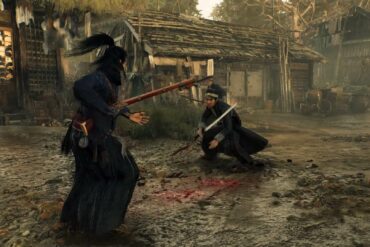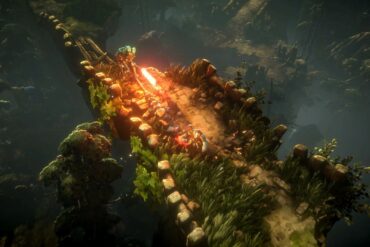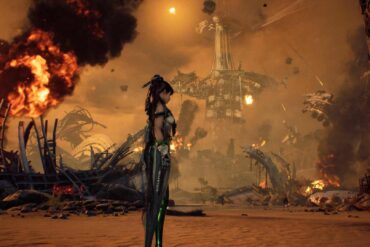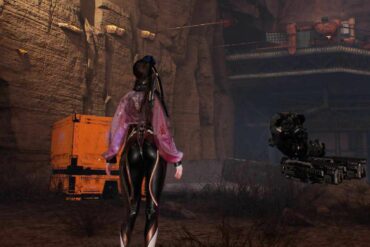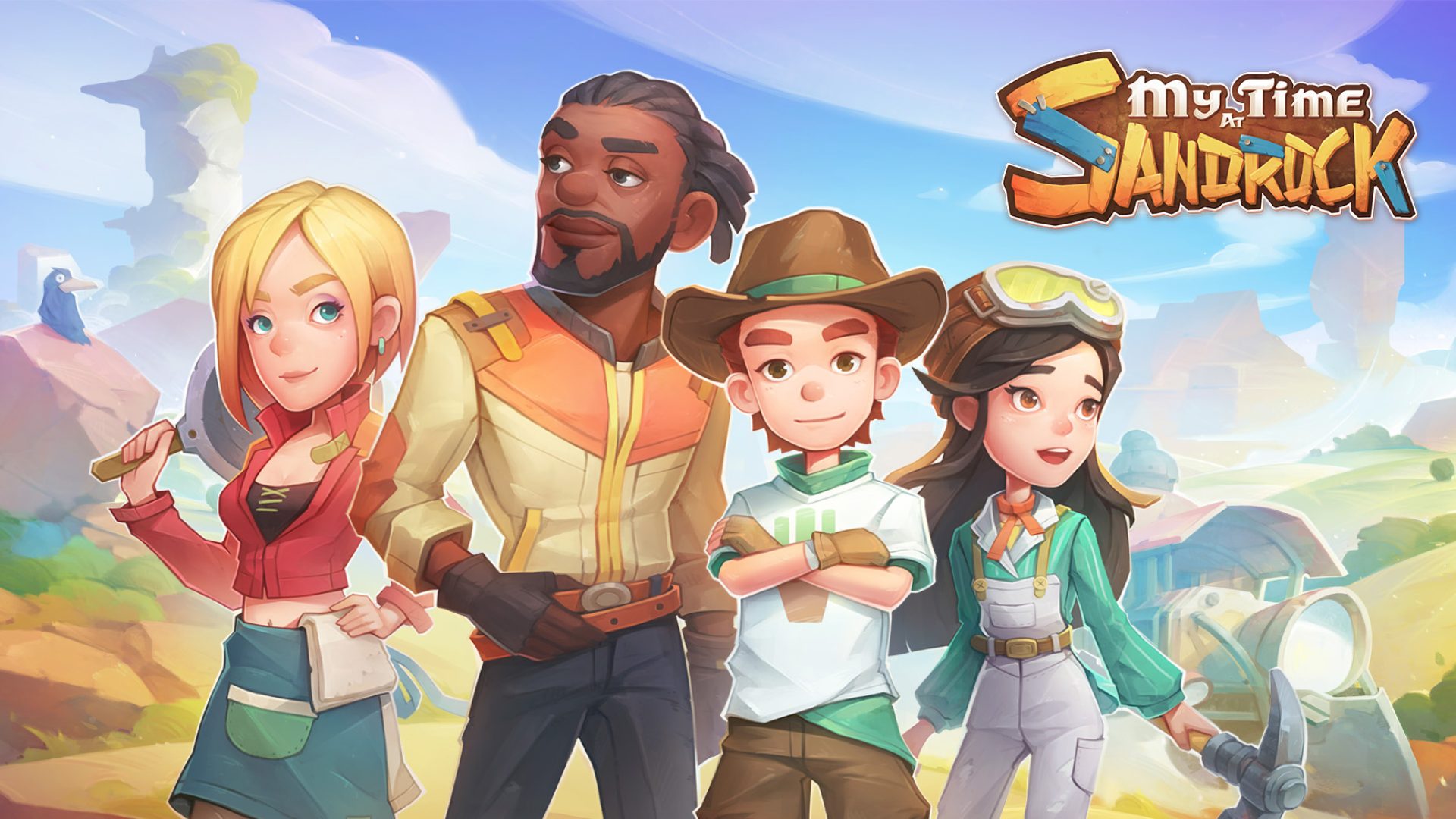When I was younger, I used to play the Sims 2 on my PC, running at 12 frames per second. Having nothing else to compare it to, this was, in my eyes, exactly how it was supposed to run. As I’ve gotten older, fps and low-quality visuals have become only incrementally more important, with stories and compelling gameplay fulfilling me enough that I can overlook technical performance. Unfortunately, as a reviewer, I am not afforded such a luxury. I have a responsibility to let you know exactly what kind of experience you’re getting yourself in for, and in the case of My Time at Sandrock, it’s an unequivocally broken one. While its core gameplay loop is genuinely enthralling and its art direction stunning on other platforms, the Nintendo Switch version of Sandrock is so fundamentally flawed that it’s hard to recommend this to anyone.
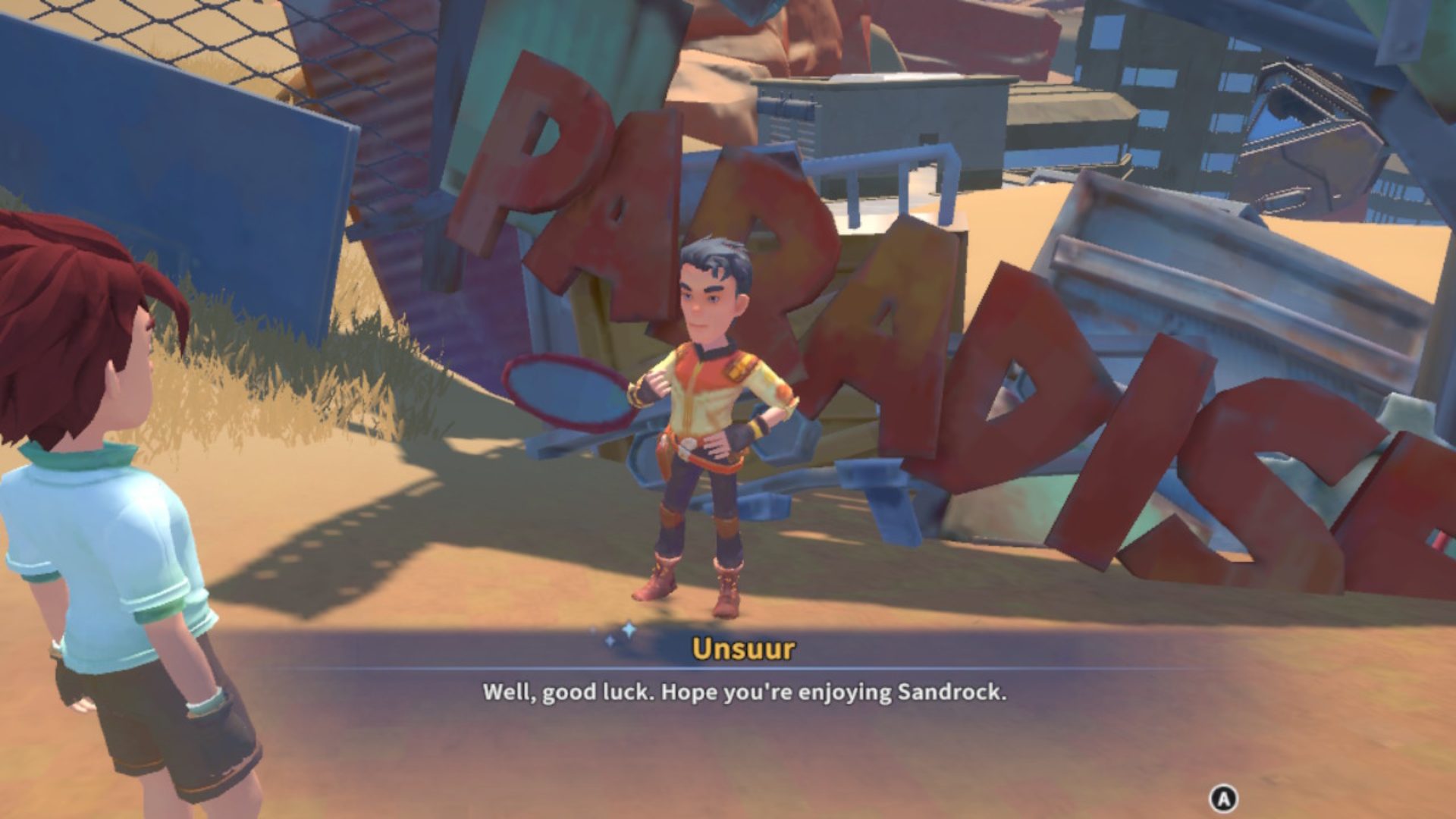
“There’s a lot more going on in Sandrock than you may initially expect, with the more wholesome setup diverging into intrigue and mystery.”
My Time at Sandrock starts you off as a customizable builder heading to the once-prosperous town of Sandrock with a dream of restoring it to its former glory. Much like its predecessor, My Time at Portia, Sandrock is a post-apocalyptic game, albeit a wholesome one. The world in which it is set is rather intriguing, one filled with advanced technology left to rust in the ruins of an old city buried beneath the sand. It’s also one with its own politics, religion, and core ideals that, while familiar to fans of sci-fi shows such as Firefly, make the world and narrative feel refreshingly fleshed out.
There’s a lot more going on in Sandrock than you may initially expect, with the more wholesome setup diverging into intrigue and mystery. The ruins, with their hallowed halls and sand-smothered corridors, are filled with secrets waiting to be uncovered. Meanwhile, a seemingly nefarious bandit lurks nearby, his relationship with the town gradually fleshed out as the story progresses. It’s nothing special and won’t stay with you as long as other story-driven experiences. However, it helps contextualize everything you do, giving credence to your actions and relationships with the world, the town of Sandrock, and its colorful cast of characters.
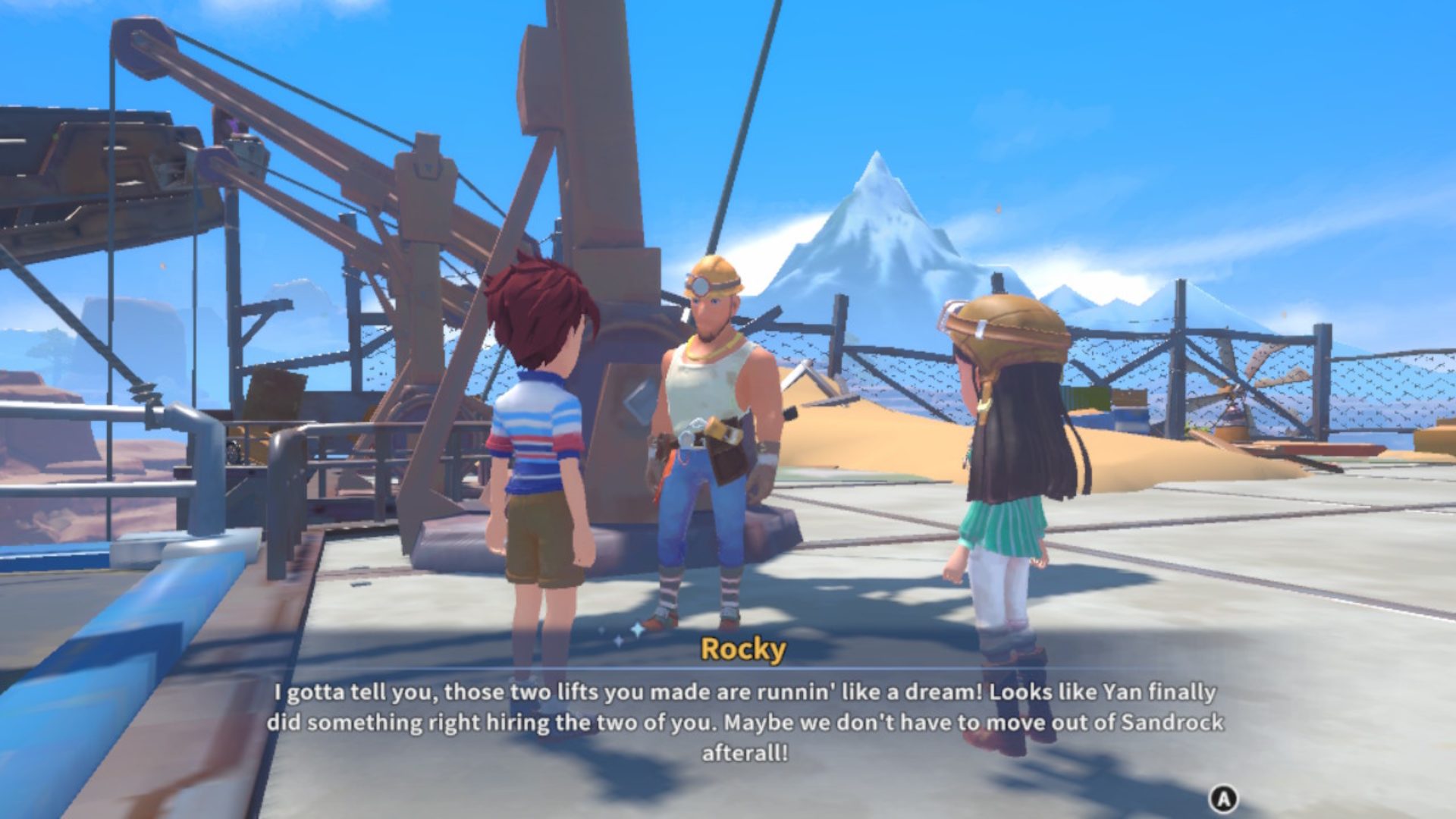
The way Sandrock tells its story is perhaps a little less compelling. It’s spread out across the game’s extraordinarily lengthy runtime, taking upwards of 60 hours to complete. This means that it is often affected by pacing issues, with some main missions requiring an inordinate amount of time to complete. It’s fortunate, then, that the story is mostly secondary despite offering enough depth to be valued as a core component of the overall game. Instead, you’ll spend much of your time conversing with NPCs and engrossing yourself in their stories.
“I wasn’t particularly interested in the relationship side of My Time at Sandrock because the game fails to make it a compelling component.”
The sheer number of NPCs you can talk to in My Time at Sandrock is staggering, around 30 in total, and helps make the game world feel significantly more believable. Their presence, as artificial as it may be, can, at times, feel real. Watching them go about their daily lives, entering and exiting buildings seemingly with purpose, and even conversing with one another is immersively captivating. However, how much time you’ll spend with each of them will vary, as it often feels like certain characters got more attention in the writer’s room than others.
I wasn’t particularly interested in the relationship side of My Time at Sandrock, not due to my lack of interest in that mechanic generally, but because the game fails to make it a compelling component. Despite the overwhelming number of NPCs to choose from, so few felt like genuine people. I forgot most even existed, surprised whenever they popped up before they quickly faded back into obscurity. The few that I did get to know, Owen being a particular highlight, were enjoyable and, at times, exceptionally well-written. However, I can’t say I engaged much with this feature as beyond hearing a one-liner each day and giving them gifts, it didn’t feel like there was much to our relationships.
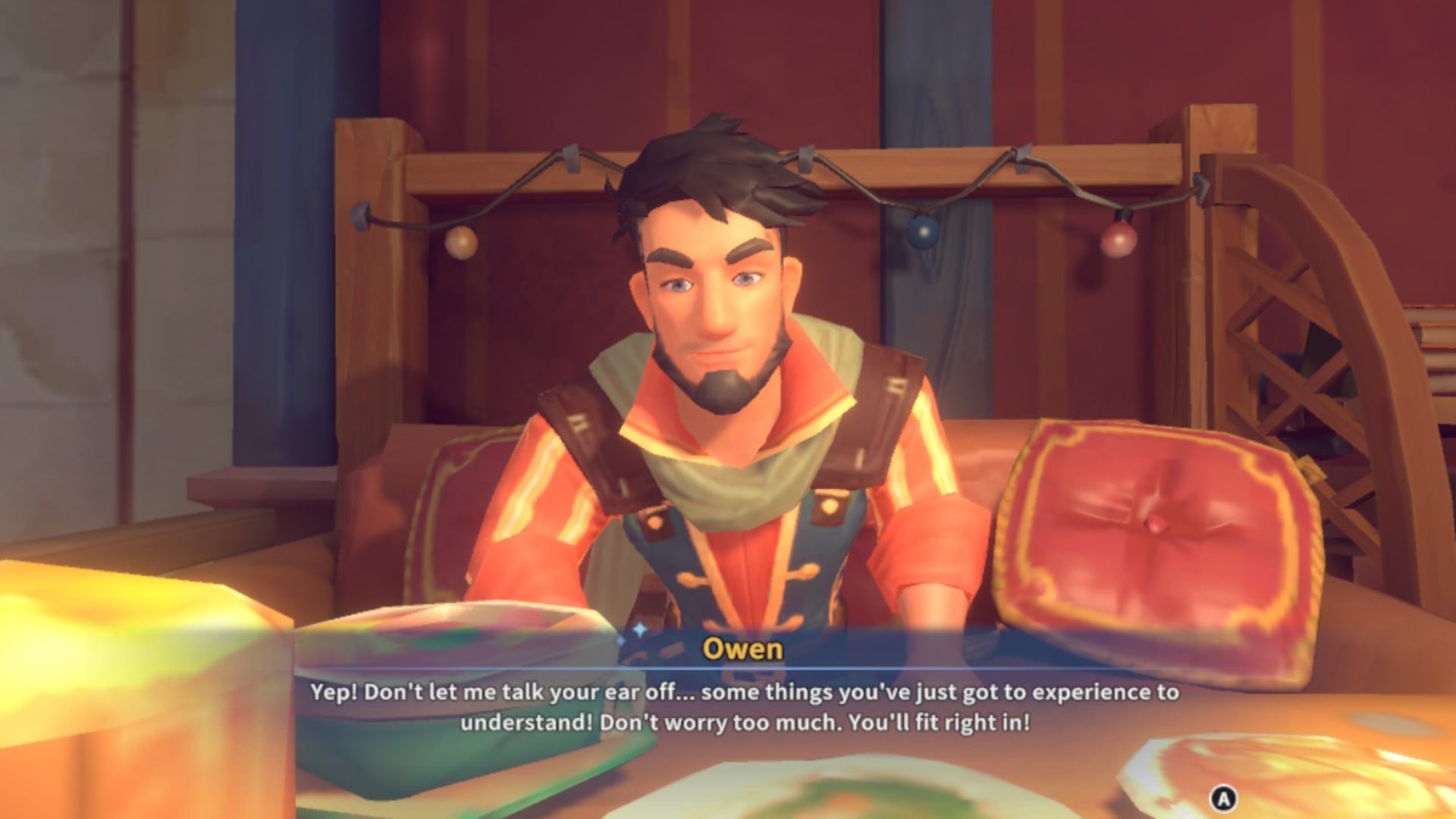
Fortunately, the majority of NPCs seem to have their own questlines or at least a handful of side quests for you to complete. This functions as a way of not only getting to know them on a deeper level but mechanically increasing your relationship with them, opening up the interactions you can have. These quests were never particularly special, amounting to little more than fetch quests or building tasks. However, some of the cutscenes you unlock as a result were enjoyable and worth the effort.
“Construction is an incredibly involved and lengthy process that feels as rewarding as finally taking down a Dark Souls boss after 50 attempts.”
Outside of questing and chatting up NPCs, you’ll be engaging in My Time at Sandrock’s core gameplay loop of crafting exponentially complex constructions. This is by far the game’s best aspect, owing to its many intricate nuances. Each main mission will require you to construct something for the town, be it a crane to lower you down into the old ruins or a stage after a sandstorm swept through town, destroying everything. These constructions, however, require a lot more effort than simply gathering a bunch of resources and throwing them together.
Rather, you’ll need to craft machines that refine materials that can then be used to make other machines that make the parts you actually need. There’s plenty to consider, such as purchasing the correct recipes, researching others, mining resources in the ruins, or even unlocking the next level of the ruins to find new ones. It’s an incredibly involved and lengthy process that feels as rewarding as finally taking down a Dark Souls boss after 50 attempts.
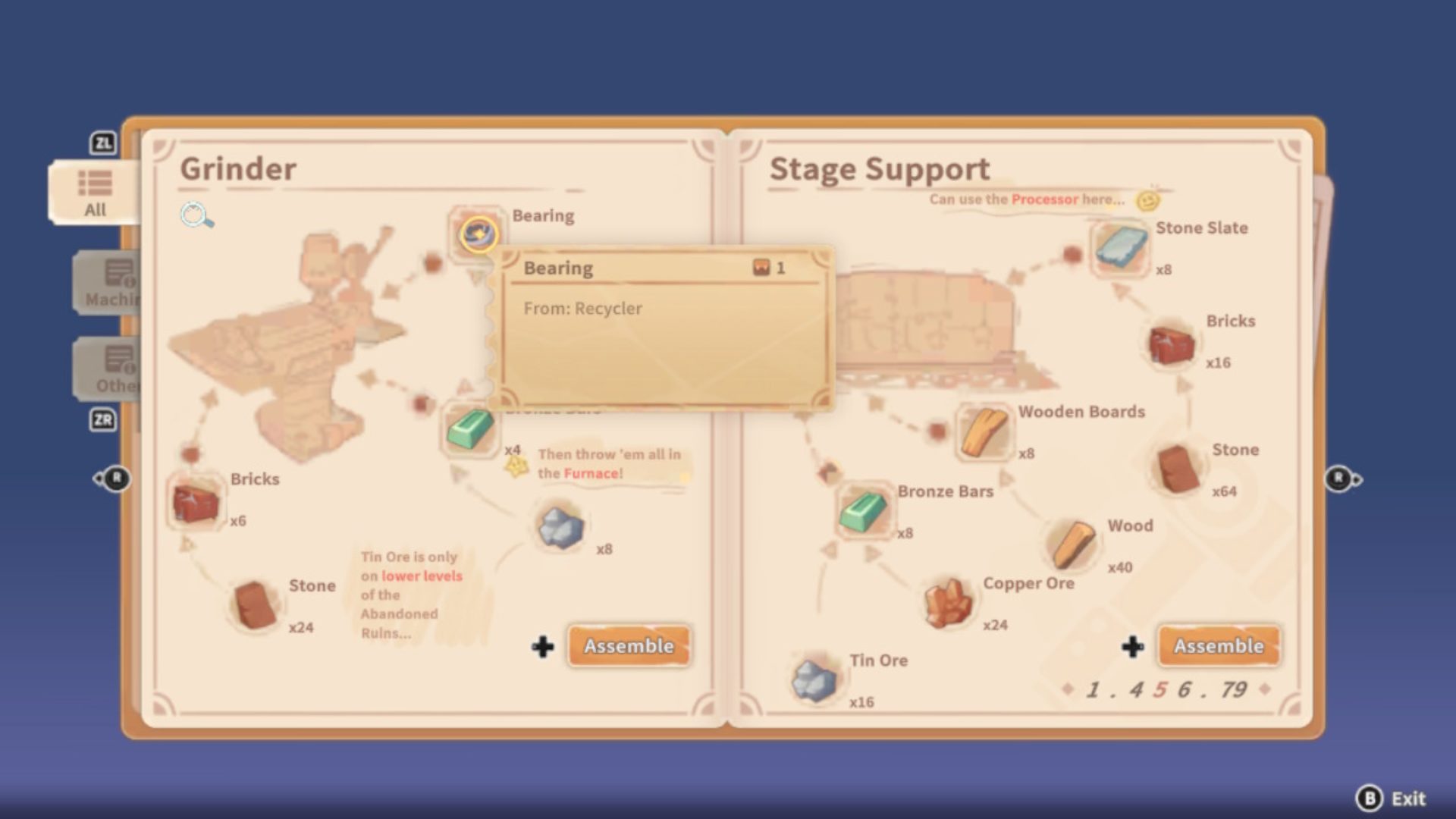
Fortunately, despite seeming overwhelming, much of it has been streamlined. Each construction informs you what resources you’ll need as well as where to locate them or what machines craft them. Your inventory can be increased at any time, no matter where you are, for an incrementally increasing cost. Furthermore, the game’s plethora of other content to complete keeps you busy while you wait for your resources to finish being crafted, ensuring you never get bored. It all coalesces into a gameplay loop that is surprisingly engrossing, especially if you already have an affinity for this genre of game.
“It is genuinely impressive how not only content-rich My Time at Sandrock is but how in-depth so much of it is.”
As previously mentioned, My Time at Sandrock has a staggering amount of side content to engage with when you’re waiting to progress the main story. Perhaps the most engaging of this side content is the combat, which, while hardly nuanced, is entertaining for a long while. This is, in part, due to the large selection of weapons that expands the more you play to even include guns. It’s never a particularly complex system, boiling down to button mashing and dodging attacks at the right time, but is nevertheless a fun addition to an already stacked game.
However, beyond this, you’ve also got a farming system that could easily be its own game, as well as tending to animals and the ability to cook food. There’s also an arcade with playable mini-games, including a rather in-depth RPG roguelike and a claw machine. If that wasn’t enough, you’ve also got the relationship system with NPCs, side quests, resource gathering, dungeon delving, and so much more.
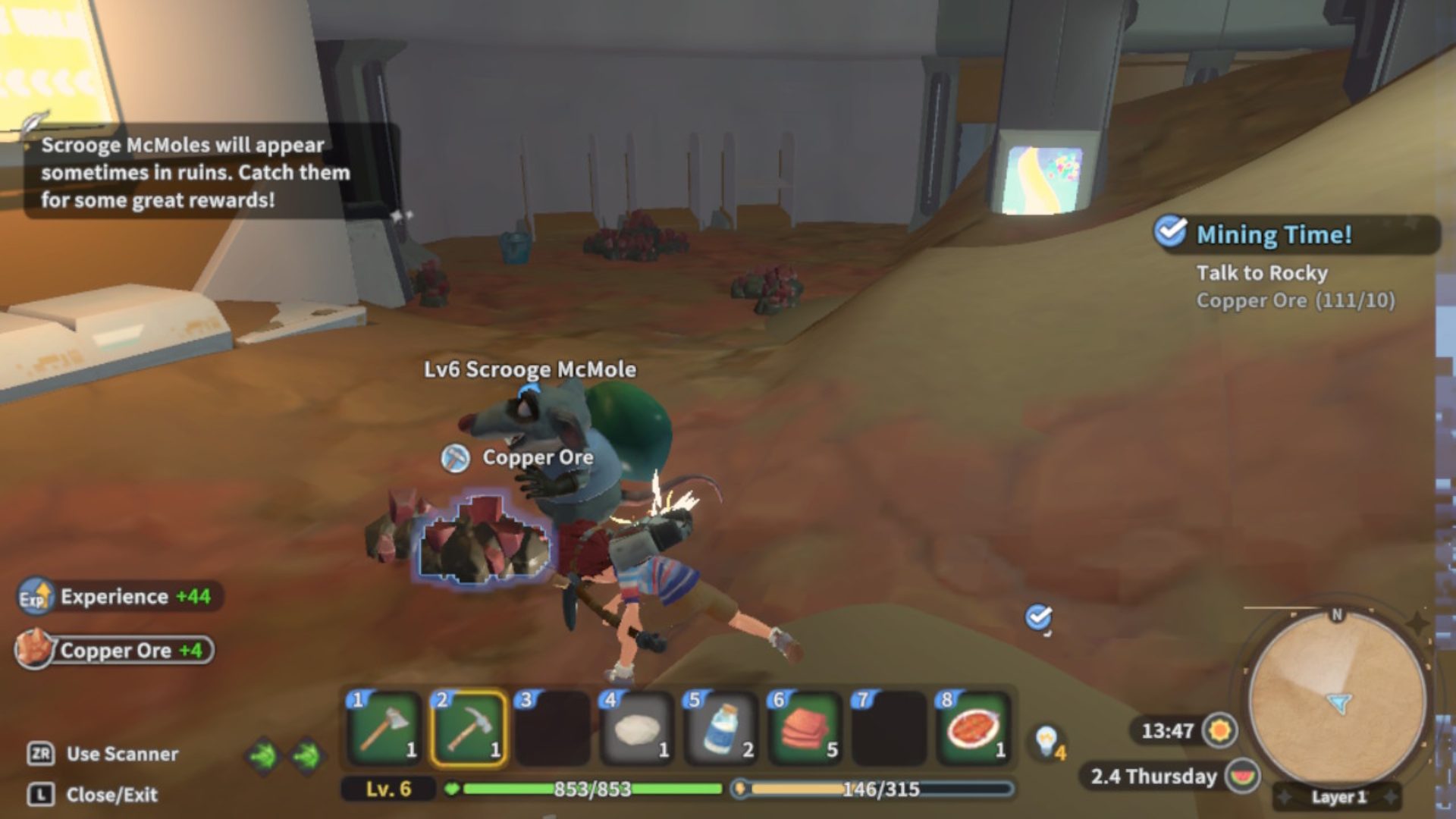
It is genuinely impressive how not only content-rich My Time at Sandrock is but how in-depth so much of it is. At times, the game can feel a little busy, with so much to do and see, especially the further into the game you get. Additionally, it’s not all made equal, with some of the side activities lacking the depth that others have been afforded, and you won’t necessarily engage with it all for extended periods of time. However, it’s hard to complain, and for the most part, it all helps to heighten both your overall immersion and engagement.
“When compared to the PC or even last-gen versions of the game, My Time at Sandrock looks unacceptably bad on Nintendo Switch.”
Unfortunately, this is where the majority of my praise for My Time at Sandrock ends, as the visual and technical side of the game is so fundamentally flawed that it completely ruined my overall enjoyment. Visually, My Time at Sandrock is a mixed bag, and that’s being generous. Under certain lighting conditions and from particular angles, the game can look somewhat gorgeous, with rich colors and the game’s stunning overall art direction working beautifully in conjunction with one another. Interiors are also a notable highlight visually, as they tend to be a little more detailed and don’t suffer from some of the technical issues the rest of the game’s environments do.
Unfortunately, even with these frankly charitable graces, the visuals on Nintendo Switch look atrocious. NPCs look like misshapen clay, which not only removes a lot of their superficial personality but also makes them unpleasant to talk to. Environments are filled with low-quality textures that look ugly from afar and up close. When compared to the PC or even last-gen versions of the game, My Time at Sandrock looks unacceptably bad on Nintendo Switch. It’s perhaps something you could get used to, I certainly did after an arduous amount of time, but that doesn’t make it any better.
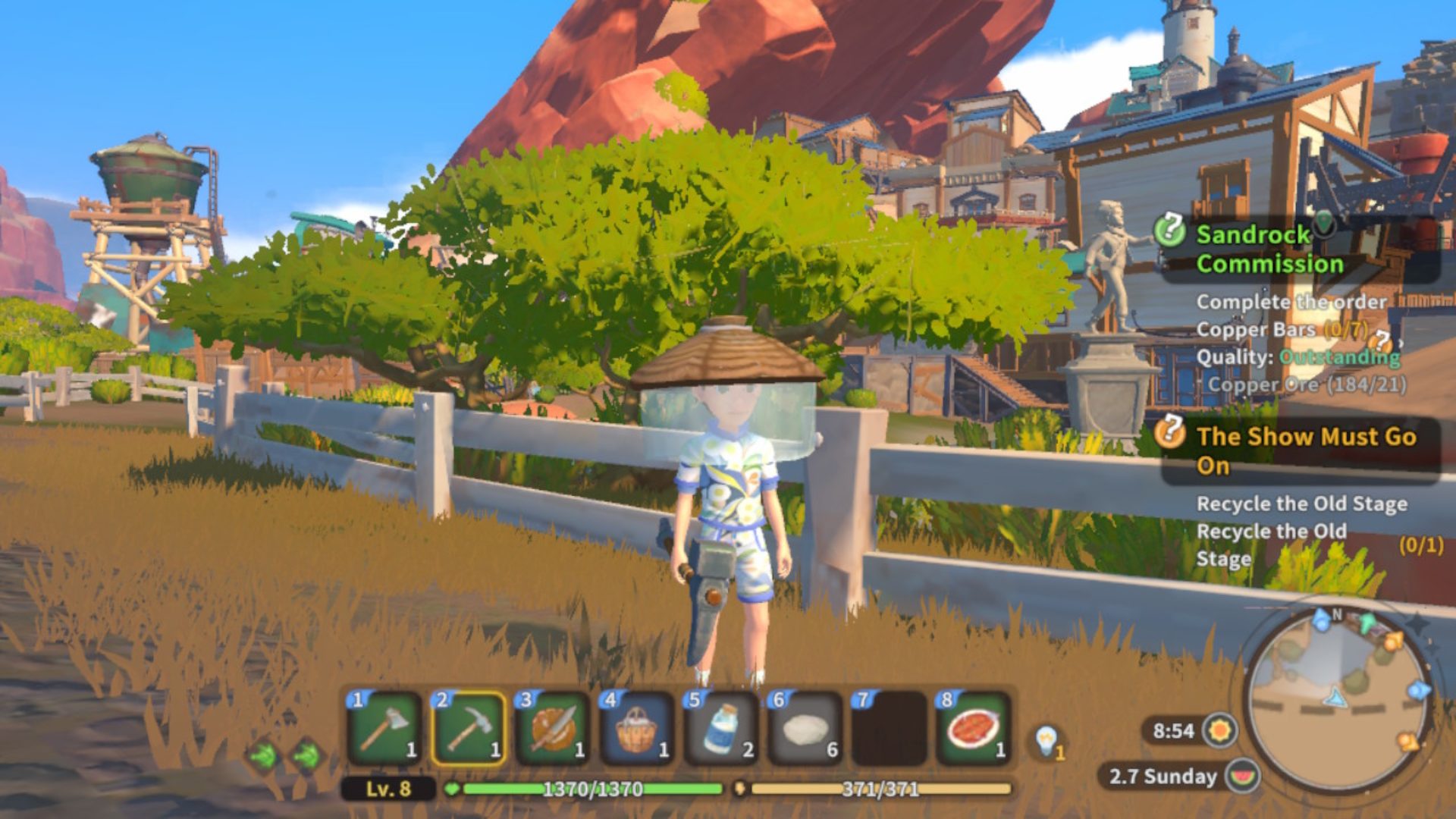
Fortunately, the game’s score is actually rather excellent, with soothing western-infused tracks playing as you explore the open world and jaunty songs bursting to life whenever you enter Sandrock itself. It’s a highlight, for sure, and one that makes venturing out into the murky, low-resolution environments slightly more bearable.
“My Time at Sandrock’s performance is a joke, with almost every area of the game outside of interiors dragging the frame rate through the mud.”
However, what is significantly less easy to excuse is the game’s dreadful performance. For starters, almost everything in the environment, from lamposts to entire buildings, pops in mere meters in front of you. This happens all the time, making exploration a guessing game of when and what will appear before you. It’s distracting and completely immersion-breaking, not to mention demonstrably inexcusable considering the already low quality of the assets being rendered.
My Time at Sandrock’s performance is also a joke, with almost every area of the game outside of interiors dragging the frame rate through the mud. Although I was instructed that Sandrock’s frame rate would dip in busy areas, I found that it rarely reached 30, regardless of where I was or what I was doing. It stuttered at practically every opportunity and dropped as low as possible, even out in the lifeless dunes. Of course, in Sandrock itself, the frame rate dips dramatically, bringing the game to an agonizing crawl. I was also warned that the game would crash after 3 hours of play due to memory optimization not being fully implemented. Fortunately, I never experienced this, as I never played long enough to encounter it.
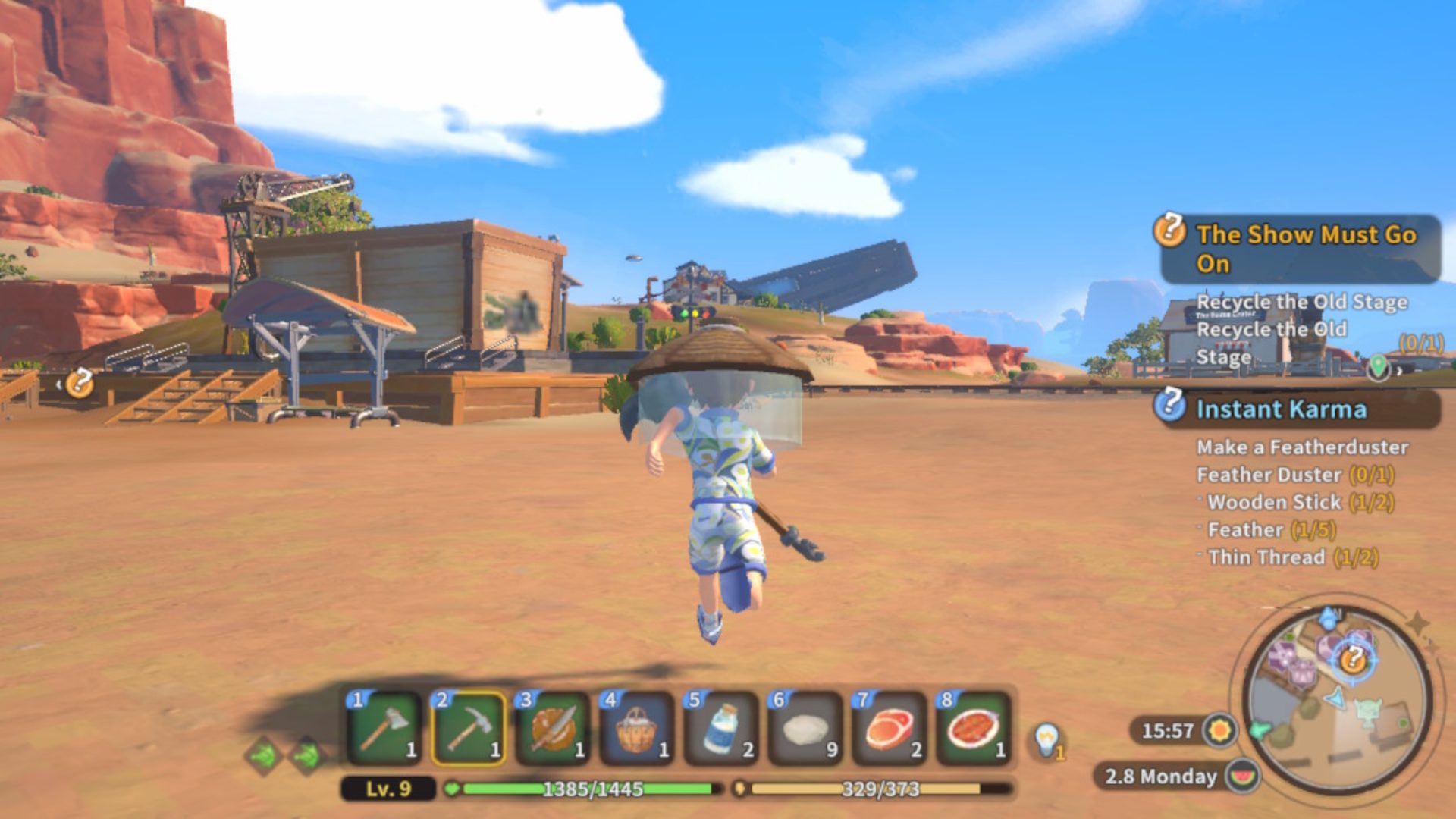
Supposedly, a few of these issues are going to be addressed before the official launch on November 2. However, some will apparently be resolved in a post-launch patch sometime in mid-November. As such, I would highly recommend anyone thinking of picking this up on Switch wait until these patches are implemented before considering buying. I would also encourage you to check out our YouTube review to see the performance issues for yourself. Alas, in its current technical state, My Time at Sandrock is an unmitigated mess on the Nintendo Switch.
“I highly recommend you avoid My Time at Sandrock on the Nintendo Switch or consider picking it up on another platform.”
I really wanted to give My Time at Sandrock a positive score. Had I reviewed it on another platform, I suspect I would have given it an 8. Its gameplay loop is genuinely engrossing, not to mention absolutely packed with rich and engaging content. The central story, while not paced perfectly, was genuinely intriguing, and the worldbuilding is effectively immersive. Even the NPCs, most of whom I didn’t build a connection with, serve the game admirably if only as realistic Westworld-esque set dressing.
However, I cannot in good conscience give My Time at Sandrock such a high score on the Nintendo Switch. This port is completely broken, with terrible performance, pop-in issues, and only occasionally beautiful visuals. Should these issues be addressed, then My Time at Sandrock will be worth picking up on Switch, and my score would increase exponentially. However, until then, I highly recommend you avoid My Time at Sandrock on the Nintendo Switch or consider picking it up on another platform.
*Disclaimer: Reviewed on the Nintendo Switch; code was provided by publisher.


